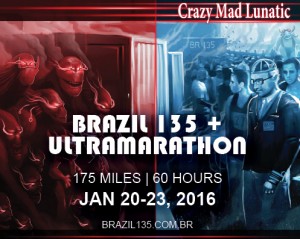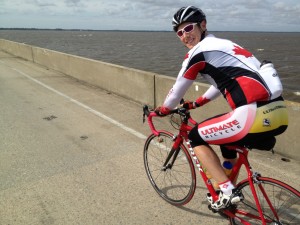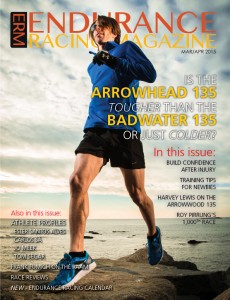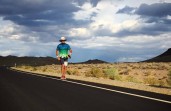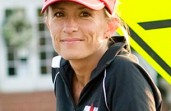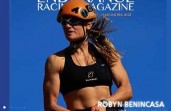Nutrition for IRONMAN athletes
An administrator from Riverside Health Systems talks racing, lifestyle and fuel.
Chelsea H. Bryan
A family man through highs and lows testifies that no amount of rigid discipline, smart training or executive-level planning can prepare an Ironman triathlete for the emotions, challenges and surprises of a race.
 ERM: What turn of events led you to racing the Ironman?
ERM: What turn of events led you to racing the Ironman?
I grew up in Canada, so I played hockey all through college. In high school I was a pretty competitive rower, winning the prestigious Canadian Henley Regatta two times and being part of a national championship crew for two years in a row. I have always been intrigued by the Ironman, which I used to see yearly on ABC Wide World of Sports. In my freshman year of college, I met a guy who said he was training for triathlons; he invited me to join him in the pool one morning. Never being a swimmer, I swam one length of the pool and had to hold on for a few minutes after each lap to catch my breath. One lap eventually led to 2, 4, 10, etc., before I had to stop for air. That summer (1989 at age 19) I did my first Olympic Distance triathlon (1.5k swim, 40k bike, 10k run), and then I was hooked. I raced quite a bit until 1995, when I was hit by a car while training on my bike in Florida.
I quit all racing until about 6 years ago,when I realized I was getting out of shape and needed motivation to get back in gear. I never really had Ironman on my mind, but when I got married 5 years ago I was thinking about what we would do for our first anniversary; I noticed that Challenge Roth was on that same year. Challenge Roth is an iconic race in the sport of triathlon, second only to the Hawaii Ironman, so I always wanted to do this race. I gradually approached my wife with the idea of me racing on our anniversary and then us spending a week in Germany relaxing. A anniversary race-cation! She was all in, as our honeymoon was held the previous year in France, Germany and Italy following the Tour de France.
Challenge Roth was amazing. The course is completely closed to traffic; there are over 400,000 spectators lining the course, and one famous climb (Solar Berg) where over 40,000 folks crowd a small hill and open up a small lane for us to bike up and through—just like the Tour de France climbs we see so often on TV. That got the Ironman Distance in my blood, and I have done one Ironman each year since 2009.
ERM: What is your training like?
Due to time constraints, I have to be pretty specific with what I want to get out of each workout. I find it best to set my workouts and then recruit friends to join me. I am self-coached, and I help coach a few friends and family with running and triathlon races. Living in Williamsburg, Va., we are also blessed with a good cycling group if I want to join them during the week or on weekends. I also have access to a masters swim group that I join sporadically when I want to get in some focused hard swimming. The same holds true with a local running group, where I can join in for some structured running intervals if I am not too concerned about building up to an upcoming race.
Right now I am helping to coach my wife for her first half-marathon in the spring of 2013, so my main training is baby-watching in this off-season!
ERM: What techniques do you have your wife or friends employ while helping train them?
With the exception of the swim, I base all my training off of time rather than distance. I am a firm believer in not training for distance. Your body doesn’t know distance, so I always found that progression in exercise both in distance and intensity is best measured through progression in time spent exercising. I gradually introduce longer workouts with more intensity, and those are all time-based. Rather than doing 3 x 1 mile or 8 x 0.5 miles, I will prescribe 3 x 7 min or 8 x 3:30. For long runs I prescribe time as well, such as 90 minutes. There are certain paces I ask them to hit as well. I think this helps, as many times we have accumulated fatigue in our systems that may pop up now and again. If I ask someone to run 80 minutes at a certain pace, like 8-minute miles, then they will likely complete 10 miles in that time. If for some reason they are not quite 100 percent, they may run 8:15 pace which will be less than 10 miles. If I asked them to run 10 miles and they continue on past 80 minutes, that leads to incremental increases in time spent training — which I believe leads to quicker breakdown and injury.
Also, I know people traveland when traveling, if you try to stick to a schedule, you may be forcing your body into much harder work than needed. Say you usually run on a flat course and then travel to a hilly area: 10 miles flat is easier and much faster than 10 miles on a hilly course. By focusing on time, we know exactly the time spent each week exercising. I use the standard three weeks up and one recovery week for younger athletes. As a masters athlete myself, I need more recovery; I usually respond better to two weeks up and one week down, with occasional blocks of three weeks up and one week down.
ERM: On your mental training. It takes a certain mental fortitude to do this sport. What drives you and keeps you sustained during competition?
With Ironman being such a long race, you can expect something to go wrong — and it always does. You need to stay mentally strong to overcome these obstacles. Your decisions will save you time or cost you time down the road. I try to stay focused on the present and not think about the future. I also like to pray a lot and be thankful to God for giving me the ability and means to participate in such a wonderful adventure. I ask for guidance to stay focused and to help me execute to the best of my ability. After biking 112 miles, it is a tough mental thing to think of running a full marathon! You have to break the race down into pieces. During the swim, I try to stay focused on a comfortable stroke and finding space in the water so I can swim at a good tempo but never all-out. You can’t win the race in the water, but you can ruin the rest of your day if you go too hard. On the bike, I focus on my power and my cadence. I reset my computer every 30 minutes and take the bike in 30-minute segments for power/cadence and 20-minute segments for food and water. It is important to stay hydrated and keep getting the calories in on the bike to give you energy requirements for the run. On the run, I focus on cadence and on running a steady pace. I still have yet to nail an Ironman run, so I still have a lot of learning to do around race execution for this part of the race.
ERM: How do you balance training hours with work, family and the like?
I am married, with a recent addition to our family of our lovely daughter, who is 9 months old. I work as an administrator for a large health system where I oversee the physical therapy, the wellness centers (two) and the home medical equipment divisions. I also chair our employee wellness committee for our organization of over 8,000 employees. On top of family and work, I don’t have a lot of free time to train. I typically average 8 to 14 hours per week training. The bulk of my training is 8 to 11 hours per week, with that increasing to 12 to 14 hours per week as I get close to a race. I understand a lot of top amateurs spend over 20 hours per week training, but I don’t have that luxury, or desire. That being said, I do have a 10:29 Ironman PR; I know that as I continue to progress, I can get that to under 10 hours on the same amount of training.
ERM: Do you budget for your competitions each year?
I do look at a few target races that I want to do and then I figure out costs, etc. We are a single-income family now, with my wife staying home this year after the birth of our daughterso we have to be prudent with our spending. I try to incorporate some travel or pick races where my family can come, and enjoy the area both before and after the race. This year I raced Ironman Cozumel, which was a wonderful race venue — plus not a bad place to visit in November when our weather is getting colder! To top it off, Cozumel in November is fairly reasonably priced (before the prices are hiked for the holiday season). For 2013, I am looking to race up in New Hampshire, where my wife is from, and maybe do a race back home in Canada to visit some friends.
ERM :What’s the main draw in all this work?
I am always motivated primarily to stay in shape and live a healthy lifestyle. I don’t like doing the same thing every day, which is why triathlon is so great. It keeps you fit while at the same time allows you some variety in what you do each day to keep the routine fresh. Being a new dad, I feel it is extremely important to lead by example; I hope to continue to set goals and strive to achieve them, teaching my daughter the importance of goal setting and commitment as well as the benefits of living a healthy lifestyle.
ERM: In terms of pain and injury, is anything slowing you down?
As a masters athlete, I always have a few exercise-induced aches to deal with. From my hockey-playing days, I have a lower-back issue and shoulder problems that impact all three of the triathlon disciplines. Luckily I am a physical therapist, so I know what to do — but that doesn’t mean I always do it. As I look to improve this year, I know I need to address more functional core strengthening to keep my body stable through the three legs of the triathlon. I have a chronic left hamstring strain that is fairly high in leg close to its insertion. It requires frequent stretching and strengthening to keep me going during the run. To help, I will need to focus on my hips this year; Ill have to improve my lateral stability while increasing hip range of motion to keep me as aero as possible on the bike and allow me to maintain a full gait cycle during the run.
ERM: Lets talk food. You mentioned that when you race, you expect things to go wrong and try to stay prepared mentally for any obstacle. Have you ever had anything go wrong with food?
I have experienced GI issues in races, and I think most of the time it relates to pacing. The most likely cause is too many calories in too much concentrate in my stomach because my pacing is too intense. If you think about it, you can eat whatever you want on slow training rides and runs. If I have GI issues, I try to slow down slightly and focus on taking in some more water.
I also think Gatorade does not mix well with me. At one Ironman event, I lost my EFS on the bike and had to go with Gatorade. My stomach cramped badly and it affected my race. No matter how much I slowed down, I couldn’t get my stomach to settle. Knowing this, I tried to train myself to tolerate Gatorade because I knew Ironman Cozumel had Gatorade on the course this year. I was able to handle one bottle in training. Come race day I was racing strong, and at the halfway point of the bike I elected not to stop at special needs and get my reserve bottle of EFS. I convinced myself that I could tolerate Gatorade better now that I trained with it prior to the race.
The last half of the bike I did get some cramps, but they were manageable and did not slow me down. The run was a different story: My GI was a mess from mile one onward. I even stopped at a port-o-potty at mile 14 for over 10 minutes to try to rid myself of the issue, but it never cleared. I pushed through, but not stopping for 5 minutes on the bike to get my nutrition most likely cost me over 30 minutes on my run time. I cost myself about 25 minutes overall by making a poor nutrition choice during the race. Live and learn!
ERM: If you could recommend one food, product or any type of fuel that you most depend on when racing, what would it be?
I think all First Endurance products are the best. Their sports drink, “EFS drink”, has the largest concentration of electrolytes of any product out there, and I am a larger athlete from an endurance training perspective (5’10, 170 lbs.) so I need more electrolytes in hotter weather as my sweat rate is pretty high. They also make a similar “EFS liquid shot”, a gel product that I use on the bike and run . It has the same electrolyte blend as their sports drink. Both products have over 1160 mg of electrolytes with 100 mg Calcium, 150 mg Magnesium, 450 mg Chloride, 300 mg Sodium, and 160 mg Potassium. The sports drink has 96 calories per scoop (24 g carbs) and includes 2000 mg of an essential amino acid blend that provides the necessary components of protein for better absorption while exercising.
You can double mix these two products together in one bottle for a great concentrate. I like to have about four to five gel shots (100 cal. per shot) plus two to three scoops of EFS drink in one water bottle for 600-800 calories per bottle. I drink this plus chase it with water, and it works effectively. Their recovery drink, Ultragen, is the best out there in my opinion. I tend to use this in the 30-minutepost-exercise window to replenish depleted glycogen stores. One serving has 320 calories with 60 grams of fast-digesting carbs and 20 grams of protein, lots of electrolytes and 6 g of glutamine, which has been shown to prevent protein breakdown and help with glycogen storage post exercise.
ERM: What was your lowest moment racing?
This summer I was doing a half Ironman in preparation for my fall Ironman in Mexico. Our daughter was about 6 months old. Right before the start of the race, I went over to my wife and daughter for a pre-race prayer and hug and kiss. I tried to get my daughters attention, but she looked at me very strange, like she had no idea who I was. Sounds crazy, but she probably didn’t recognize me with my swim cap and goggles on my head, plus all the commotion before the race.
That really hit me hard. During the swim, I wanted to quit; I got this crazy notion in my head that I was spending too much time training, my daughter has no idea who her dad was; I was feeling very sorry for myself. I got through the swim and onto the bike, but mentally I was not there. All I could think about was how bad a father I must be, how training and racing is really meaningless on the grand scheme of things and I should just focus on being a good dad. I finished the bike and talked with my wife in transition about my desire to quit, how I was a bad dad, etc. She encouraged me to run, since she knows I never quit anything, so I took off; but the thoughts persisted. I was also battling a slight abdominal strain that was aggravated by running.
It was a 2-loop run of 6.5 miles each, and after the first loop I pulled the plug and, for my first and only time, quit a race. Mentally I was not into it, and my stomach and groin were pretty sore; I didn’t want it to impact the last 2 months of training for my Ironman. I spent the rest of the weekend with my daughter.
Looking back, it was the right decision physically and mentally. I never tapered for the race so my legs were heavy throughout, and mentally I obviously wasn’t in it. I now know I need to be fully prepared to enter each race. My lack of mental prep going into the race allowed those crazy negative feelings into my head.
ERM: Best moment racing?
My wife and I did only one triathlon together, an Olympic Distance race in 2011. It was her first Olympic Distance, so I was excited and nervous for her. The swim was in the Chesapeake Bay, and it was rough with high waves and a strong current. During the swim I was worried; I was having a tough time, so I figured she was too as she was new to swimming. The bike was hot and windy and the run just plain hot. It was a two-loop bike and run. I saw my wife on the bike, and she looked strong. I was having a great bike and passing a lot of people until I was close to the front. On the run, I knew a good runner was on my heels so I really pushed hard. I high-fived my wife on the run and she looked strong still. It gave me energy to push to the end.
Shortly there after, my wife came across the finish line. She was spent and I could tell she raced hard. I was so proud — I still can’t properly explain how great it felt knowing my wife accomplished her goal. Turns out she won her age group, and I was the masters overall winner. It was a great day for us. The race was sponsored by a brewing company and the trophies were beer glasses. After the race, we sat by the beach drinking our beers out of our race trophies and got some great photos.
It still remains my best day in triathlon and one of my best memories ever.
NOTE: Ballin is sponsored by TriSports.com and part of their 2013 Champions team. TriSports.com is the largest US online retailer of triathlon gear. They are headquartered in Tucson Arizona with a large store and a second store in Tempe.


